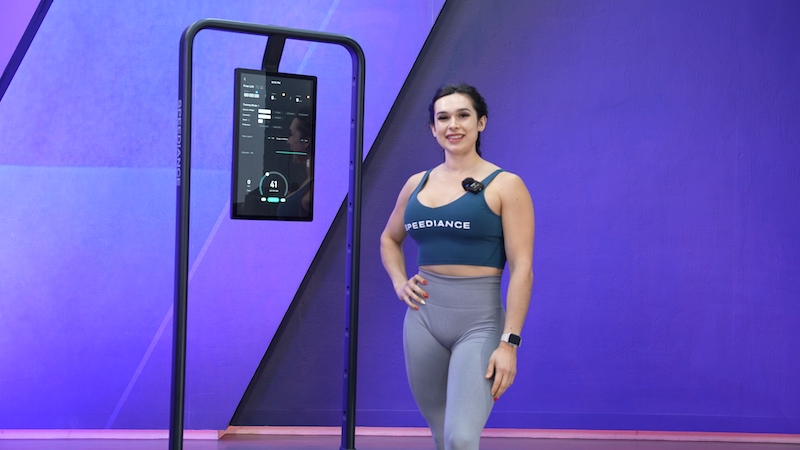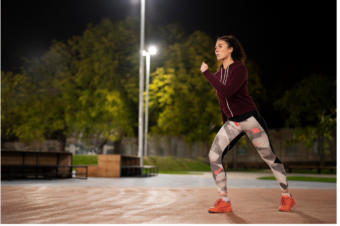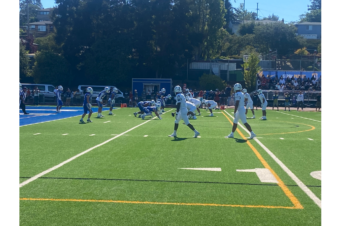

How to Transition from Summer to Fall Running: Tips for a Smooth Seasonal Shift
NewsOutdoorRunningXC-Track-Running September 12, 2024 Lauren Keating 0

As the temperatures drop and the air turns crisp, acclimating to fall running weather is key to staying comfortable and performing at your best. The cooler weather can feel refreshing, but it also requires adjustments to your routine.
The change of season brings its own set of challenges and opportunities for those who love to hit the pavement or trail. To help you make the most of this fall running, here are tips for adjusting from summer to fall runs so that training can continue without a hitch.
Listen To Your Body
“It can take your body anywhere from 4-14 days to really get used to the heat,” said certified personal trainer Sienna Vannoy. And while acclimating to the heat is harder for runners compared to fall weather, proper precautions need to be in place to keep the runner healthy all cross country season.
When running in the heat, start with lower intensity and duration of workouts, building them up as your body gets used to the heat. But cooler temperatures mean runners can take it up a notch with effort. Now is the time to work on pace goals.
“When exercising in fall/winter weather, it’s actually shown that it can improve endurance since your heart doesn’t have to work as hard with lower temperatures, meaning you’ll sweat less and expand less energy, which means you can exercise more efficiently,” Vannoy said.
Strength Train For Better Running Performance
“An athlete’s off-season should be focused around strength and conditioning to prevent injuries and enhance performance,” Vannoy, an instructor with the at-home workout system Speediance said.
She added that workouts to prepare for the fall season should include: speed, strength, agility, and mechanics.

“Now, in-season training should focus around maintaining and showcasing what they gained in the off season,” she added. “This is when an athlete wants to perform at their best and show out all of the hard work they gained in the off-season.”
Warm Up Properly
During runs in cooler weather, it’s even more important to take the time to warm up.
“As we start to head into colder weather, we want to make sure we go into this the right way to avoid any injuries,” Vannoy said. “We always want to make sure we warm up properly. Cold-weather workouts require a longer warm-up because your joints can feel stiffer. We must make sure we actually warm up our joints to get the best range of motion.”
This includes a dynamic warm-up to get the heart rate up and blood circulating. Then spend a few minutes in a brisk walk or light jog to get ready for the workout.
Hydrate, Even When It’s Cooler
Hydration is just as important for runners in the fall and winter months as in the summer. Vannoy advised to always make sure the athlete is staying hydrated. Adding electrolytes for those long runs is also crucial.
It can be harder to identify dehydration signs in fall weather. Don’t skip water breaks and always bring water along for longer workouts. The body burns more calories when working to stay warm, so bringing along sports gels or other fuel for those long runs is equally important.
Take It To The Trails
Focus on trekking through nature during fall runs—even if you are not on the cross country team this season. With ideal temperatures for long-distance running, fall is the perfect time to explore and build endurance by progressing mileage. Enjoy the outdoors by slowing the pace for longer runs. Fall running is the perfect time to take a step back in those long runs to just soak the season in. Take the time to breathe and find that purpose or reason why you love to run again.
Cross country athletes know the importance of hill training to crush their race courses. Add hill repeats to training and/or have practice runs on a hilly course.
Final Thoughts About Weather Change
There are the runners who prefer the cold, others the heat. Fall in many cases provides something for every type of runner when looking at weather. No matter the forecast, staying consistent to training and regular runs is the best way to keep the body ready to perform.










No comments so far.
Be first to leave comment below.